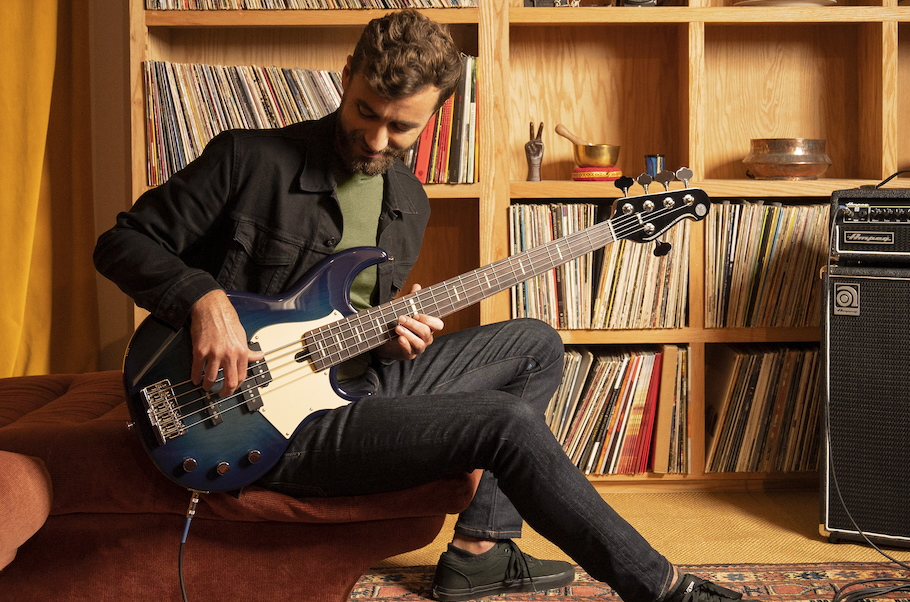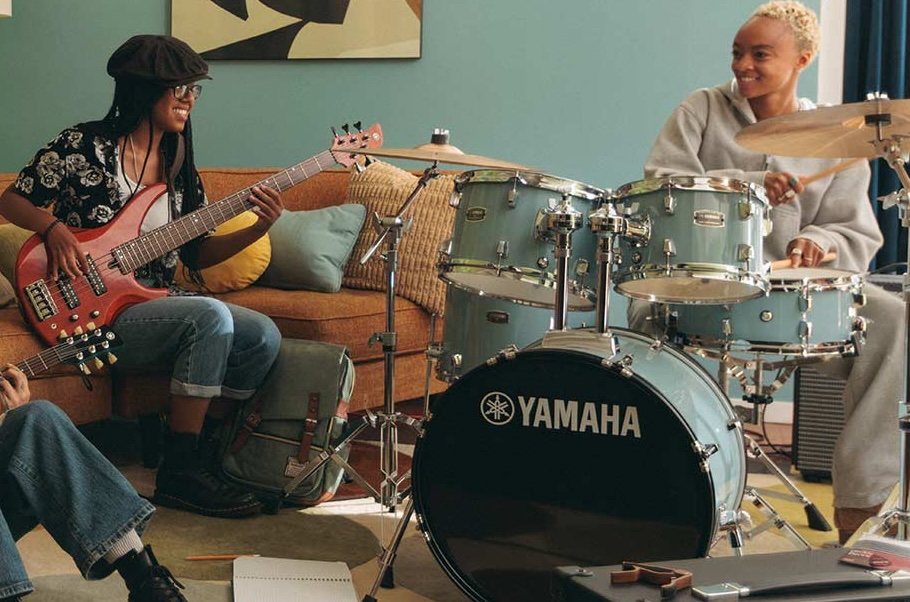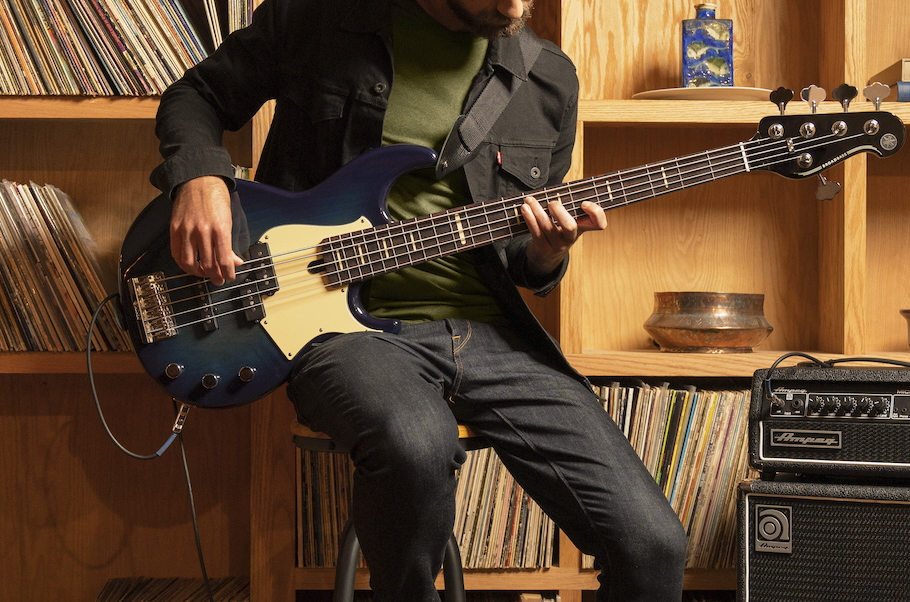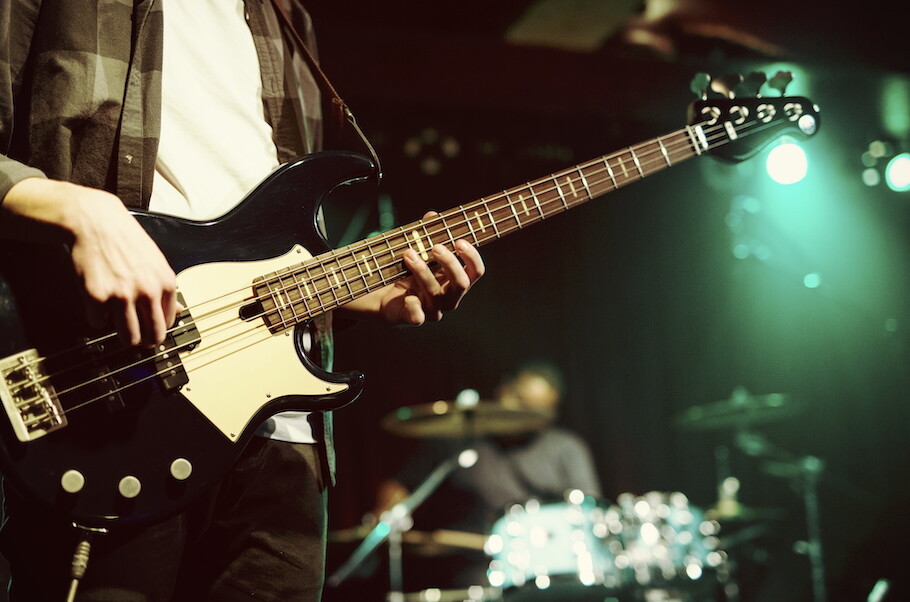The Basics of Bass EQ
In this battle of the bands, there are no losers.
Great basses aren’t created by accident — they’re conceived, designed and built with intent. To varying degrees, each design decision affects a bass’ character. For example, its neck construction (bolt-on or neck-through) impacts brightness and sustain. The tonewoods selected for the body, neck and fretboard impart particular sonic characteristics, while also affecting the instrument’s overall weight and balance. In addition, the pickup types and configurations (along with their locations on the body) play a big role in determining tonality and harmonic content, as does playing technique (picking versus fingerstyle) and the choice of string (flatwound versus roundwound). The list of contributing factors goes on and on …
But perhaps the most important factor that determines the tonality of a bass is its equalization (EQ) circuitry and settings. The “tone” knobs and switches on your bass are all connected to an out-of-view host of electronic components that make an outsized contribution to the sound even before the signal exits your bass and hits your amp, preamp and/or DI box.
Manufacturers take a variety of different approaches to bass equalization. These are the most common ones:
1. Master Knob
2. Two-band EQ
3. Three-band EQ
In this article, we’ll explain how each works, along with a description of the pros and cons of the three approaches. We’ll also provide audio clips so you can hear for yourself how tweaking your bass’ EQ controls can alter the sound. First, though, we need to tackle the concept of …
ACTIVE VS. PASSIVE EQ
Some EQ circuits are active, meaning they require power from an onboard battery to function. Others are passive, requiring no power. In the case of passive EQ circuits, the tone controls only cut frequencies, whereas active EQ controls allow you to cut or boost frequencies. Cutting frequencies isn’t necessarily better or worse than being able to boost frequencies; it’s simply a different approach to carving out the signature sound you’re after.
As you might guess, active and passive EQ circuits have different sonic characteristics. Active EQs are commonly considered more “hi-fi,” while passive EQs are often referred to as “vintage” and “warm.” If you like both, you should consider a bass equipped with active/passive EQ switching, such as Yamaha BB700 Series and TRBX600 Series instruments. Here’s what a BB735A sounds like with active EQ:
And here’s what it sounds like when switched to passive EQ:

The BB735A, along with its four-string cousin, the BB734A, also offers an interesting twist on active/passive switching: When in active mode, the three-band EQ knobs work as expected (see the “Three-Band EQ” section below), but when in passive mode, the treble knob becomes a Master Tone control, which we’ll describe next.
MASTER TONE KNOB
Many vintage basses, as well as some new ones, are equipped with a single passive “Master Tone” knob that cuts highs when you turn it counterclockwise. All Yamaha BB Series basses except the BB734A and BB735A models offer this kind of EQ control, as does the Yamaha RBX170 and TRBX174/TRBX174EW.

The following three audio clips (recorded using my vintage Yamaha BB1200 bass, strung with flatwound strings) demonstrate how the sound changes when you turn the Master Tone knob. Here, it is wide open (completely clockwise):
Next, the half-way position:
And finally, with the highs fully rolled off (completely counterclockwise):
TWO-BAND EQ
Many of today’s basses feature either a two- or a three-band EQ circuit — a “band” in this case meaning a specific frequency range. A bass with two-band EQ offers separate knobs for treble and bass. If the EQ circuit is passive, filtering occurs over that frequency range when you turn the knobs. When both knobs are wide open (i.e., turned fully clockwise), you’ll hear the uncolored sound of your bass. From there, you have two ways to alter the sound: Roll off the highs to cut string noise and accentuate the low end, and/or roll off the lows to bolster the snap and sizzle of your attack.
In basses with active two-band EQ (such as the Yamaha TRBX204 and TRBX304 /TRBX305, you can opt to boost the highs and lows, as well as cut them. Here’s the sound of a TRBX304 (strung with roundwound strings, and with both pickup volume controls equal) with both the high and low EQ knobs set to their center detent position for no cut or boost:
Compare that to the sound of the same bass with both the bass and treble boosted to the max:
And here’s the TRBX with the bass still boosted to max, but with the treble completely rolled off, for a richer, less aggressive sound:

Bassists who prefer instruments with three-band equalization (see below) claim that two-band EQ doesn’t deliver enough control over midrange frequencies. My take is that most two-band EQ circuits are more than up to the task of tone shaping, and that you should use your amp’s or mixer’s EQ section to create the general sound you want, then use the bass’ onboard EQ to tweak things to perfection, not the other way around. That said, there are certain specific advantages offered by three-band EQ, which we’ll explore next.
THREE-BAND EQ
A three-band EQ circuit features separate knobs for treble, bass and mids, and the circuitry is almost always active. Three-band EQs inherently offer greater flexibility to players who want to create a very specific sound. Perhaps you are an aggressive slap-and-pop player who lusts after a particular mid-scooped sound, or maybe you’re in a band with two guitarists and a keyboard player and need your bass to carve out a specific midrange frequency slot within the overall band mix to be heard above the din. In these and other situations, an active three-band EQ offers the comprehensive versatility to craft the specific tone you need without any compromises.
Many Yamaha basses offer three-band EQ, including the BB734A / BB735A models; the TRBX504 / TRBX505 and TRBX604FM / TRBX605FM; the BBPH Peter Hook Signature BB Bass; the BBNE2 Nathan East Signature Model (which adds a unique Mid Cut control and switch); and the TRBJP2 John Patitucci Signature Model.
Here are four audio clips demonstrating the effect of EQ on a Yamaha BB735A, strung with roundwound strings and in active EQ mode. First, here’s the 735A with the bass and mid knobs set to the center detent for no boost or cut, but with the treble full up:
Next, here it is with the bass and treble knobs 3/4 of the way up, but with the mids fully boosted:
Finally, here it is with the same bass and treble knob settings, but with the mids fully cut for a “scooped” ’70s funk sound:
While it’s true that having an extra mid band (which will usually be cut, not boosted) can help give your instrument a richer sound, set-it-and-forget-it players who typically don’t fiddle around with the knobs on their bass may not want or need so much tonal control. Inexperienced players may also find themselves intimidated and confused by the presence of so many knobs (in addition to volume and possibly blend knobs). To address that concern, some basses, such as the Yamaha TRBX304 and TRBX305, come equipped with EQ presets, enabling you to immediately select the precise sound you want rather than tweak knobs in hopes of arriving there manually. The following audio clips demonstrate two of the five EQ presets offered by the TRBX304. First, the “Pick” preset, played with a pick:
Compare this to the “Finger” preset, where I play the same bassline, this time fingerstyle:
NO WINNERS, NO LOSERS
Before you decide which approach to equalization you prefer, keep in mind that no amount of EQ (or EQ system ever designed) can make you sound better than you actually are. Great tone starts with the player, both in terms of how you play your instrument and where on the bass you actually play it. For example, plucking or picking closer to the bridge will yield a crisp, ‘70s funk sound, while playing further up the neck where the fretboard meets the body will result in a richer, warmer tone. Any and all of these approaches will dramatically affect the sound of your bass before you ever touch a tone knob, and will make your use of EQ that much more powerful when you start tweaking away.
Click here for more information about Yamaha basses.















